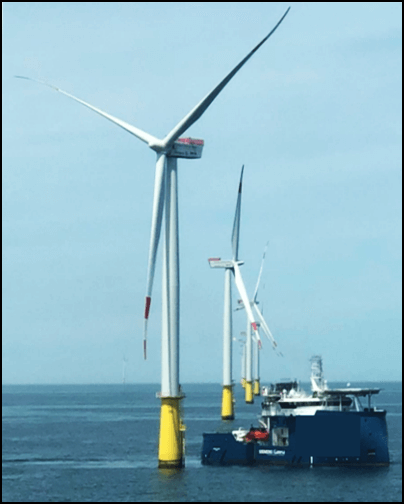-
What happened?
During simultaneous operations (SIMOPS) a turbine was authorised for activation. This was communicated to the control centre using an agreed verbal procedure.
The control room selected an incorrect turbine for activation.
There were technicians on the incorrectly activated turbine waiting to be transferred to a vessel. When the vessel entered the safety zone it was observed that the turbine was active.
The control centre was contacted. The vessel stopped its approach. The turbine was then deactivated and isolated.

-
Why did it happen?
Poor communication:
- Lack of double check on instruction to activate turbines. Two persons should have confirmed the location before activation ('four eyes principle', also known as 'two person rule').
- Lack of proper procedures and practices for handing back the turbine to operations - use of verbal commands rather than an established written permit process.

-
What did they learn?
Improve communication protocols to ensure good communication between teams. The flow of communications and information shared should be robust and clear.
Develop a more secure process for turbine control and isolation.
Improve in-built systems to prevent incorrect switching. Turbines should be released remotely via control systems.
Implement training for better alignment between different departments and teams (i.e. between control centre and operatives in the field).

-
Ask yourself or your crew
What communication protocols do we have in place to ensure clear communications between all concerned parties?
- Have you tested the communications to ensure they are working in both directions?
- Is there a backup communications plan in place if the main source goes out of action at a critical time?
What issues could result from miscommunication? How can we prevent it from happening?
How could the communication protocols be improved?

Add to homescreen
Content name
Select existing category:
Content name
New collection
Edit collection
What happened?
During simultaneous operations (SIMOPS) a turbine was authorised for activation. This was communicated to the control centre using an agreed verbal procedure.
The control room selected an incorrect turbine for activation.
There were technicians on the incorrectly activated turbine waiting to be transferred to a vessel. When the vessel entered the safety zone it was observed that the turbine was active.
The control centre was contacted. The vessel stopped its approach. The turbine was then deactivated and isolated.

Why did it happen?
Poor communication:
- Lack of double check on instruction to activate turbines. Two persons should have confirmed the location before activation ('four eyes principle', also known as 'two person rule').
- Lack of proper procedures and practices for handing back the turbine to operations - use of verbal commands rather than an established written permit process.
What did they learn?
Improve communication protocols to ensure good communication between teams. The flow of communications and information shared should be robust and clear.
Develop a more secure process for turbine control and isolation.
Improve in-built systems to prevent incorrect switching. Turbines should be released remotely via control systems.
Implement training for better alignment between different departments and teams (i.e. between control centre and operatives in the field).
Ask yourself or your crew
What communication protocols do we have in place to ensure clear communications between all concerned parties?
- Have you tested the communications to ensure they are working in both directions?
- Is there a backup communications plan in place if the main source goes out of action at a critical time?
What issues could result from miscommunication? How can we prevent it from happening?
How could the communication protocols be improved?
During simultaneous operations (simops) a turbine was authorised for activation. The control room selected an incorrect turbine for activation. A vessel entered the safety zone when it was observed that the turbine was active.














